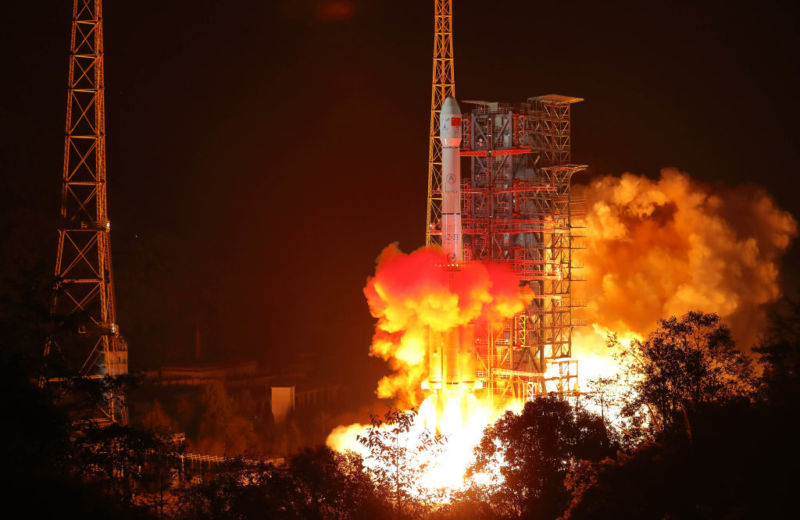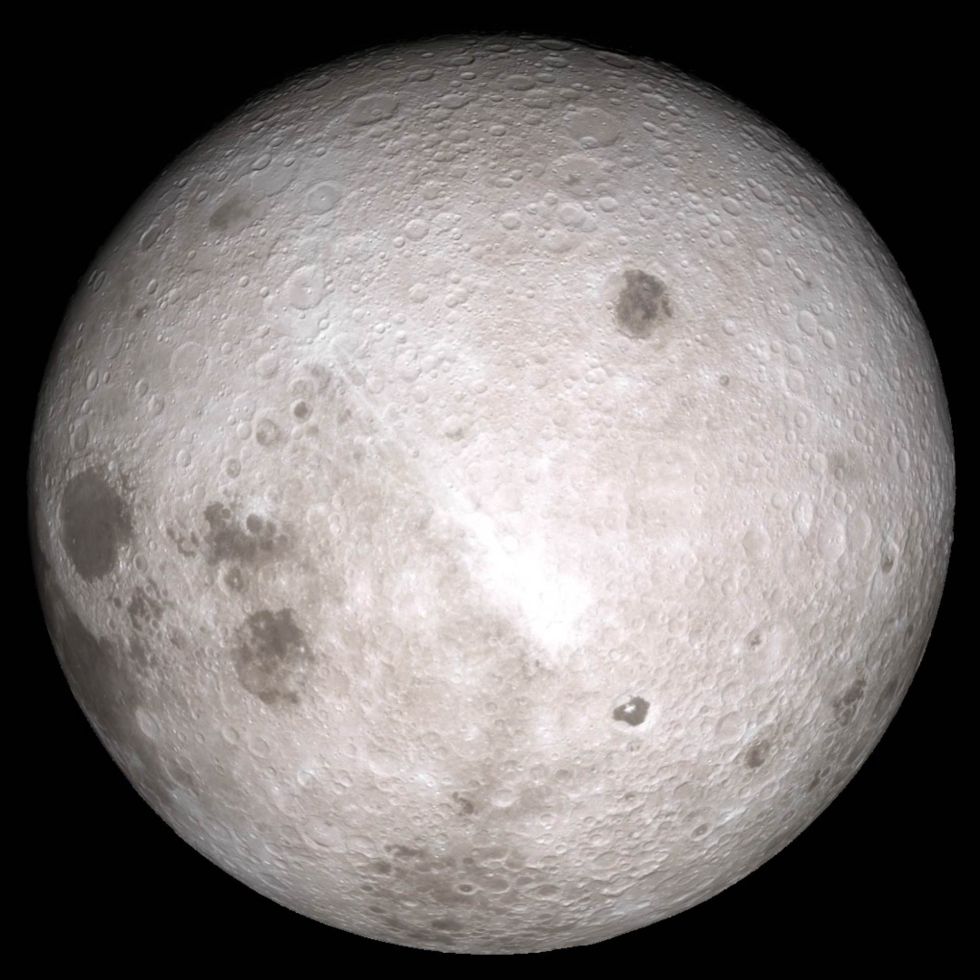https://arstechnica.com/?p=1424753

China launches Chang’e-4 lunar probe in the Xichang Satellite Launch Center in southwest China’s Sichuan Province, Dec. 8, 2018.
Xinhua/Jiang Hongjing via Getty Images
Late last week, China launched an ambitious mission that will send a lander and rover to the far side of the Moon. This Chang’e-4 spacecraft represents a significant achievement for China, as no other nation has ever softly landed a rover on the side of the Moon facing away from Earth.
If successful, this mission will carry out several lines of important scientific research on the still somewhat unknown far side of the Moon. However, the launch and landing of Chang’e-4 also helps to reveal the full scope of China’s spaceflight ambitions and how the space program furthers the country’s ambitious geopolitical goals. In this post, we try to unpack some of the implications.
What happened?
On Saturday morning (local time in China) a Long March 3B rocket sent a 4-ton lander and a 140kg rover into space, and then this Chang’e-4 spacecraft performed a trans-lunar injection to send it flying toward the Moon. The spacecraft should reach lunar orbit on Wednesday.
China has not said when it will attempt to land on the far side of the Moon, but observers speculate the attempt will likely occur the first three days of January. Before this landing takes place, Chang’e-4 will have to link up with the Queqiao relay spacecraft, which will have line-of-sight communications with both the lander, which is expected to set down in the South Pole-Aitken Basin, as well as Earth.
Why the far side?
Due to tidal locking, Earth always faces one side of the Moon, while the other side faces away from our planet. (Pink Floyd albums notwithstanding, this side is not dark, as it receives about as much sunlight as the side facing our planet as the Earth-Moon system rotates around the Sun). The Soviet Luna 3 mission took the first, grainy photographs of the far side of the Moon in 1959, and in 1962, NASA’s Ranger spacecraft impacted the surface.

NASA
But aside from the Apollo mission flybys, and some recent lunar orbiters, the far side remains relatively unexplored. The far side has a much more rugged, densely cratered appearance compared to the large, smoother maria that dominate the side of the Moon facing Earth. The precise reasons for this remain a mystery to scientists, who are eager to make in situ measurements of the far side of the Moon.
What will the lander and rover do?
The lander will set down in the oldest and deepest impact basin on the Moon, the South Pole–Aitken basin, and will focus on lunar geology. Scientists believe rocks here will have a different composition than the lunar samples collected by the Apollo missions on the near side of the Moon.
“It’s possible this basin is so deep that it contains material from the Moon’s inner mantle,” space scientist Tamela Maciel noted on Twitter. “By landing on the far side for the first time, the Chang’e-4 lander and rover will help us understand so much more about the Moon’s formation and history.”
The mission will have provide China (and other nations) with information about best practices for operating a rover on a surface that never directly faces Earth and therefore must communicate through a relay satellite. It should also provide data for astronomers who would like to one day establish a radio astronomy observatory on the far side of the Moon, which is shielded from Earth’s copious radio and satellite communications.
Does China plan to follow up with humans?
China has an increasingly ambitious space program, which it views as critical to establishing itself as a global superpower. China has both military ambitions in space (where some of its technologies rival the United States), as well as a desire for international prestige by doing new and interesting things in space. Sure, NASA has done a lot of amazing things, but it has not done a mission like the one China is attempting. This is one reason why an unprecedented, soft landing on the far side of the Moon is a big deal for the country.
China is also developing the hardware needed to eventually send taikonauts to the Moon. Earlier this year, the country signaled that it planned to accelerate development of the large Long March 9 rocket, similar in size to the Saturn V booster, to around 2028. Chinese officials have previously said their long-term goal is a series of lunar surface missions beginning in the 2030 time frame, and this rocket would enable that.
Could they do it faster?
If it engaged in a “race” back to the Moon, China might be able to beat the United States. Under its present plans, NASA is unlikely to return humans to the lunar surface before 2030. Already, with its existing Long March 5 rocket, China could “pretty easily” be on the Moon in six to eight years, said former NASA administrator Mike Griffin, who is presently Under Secretary of Defense for Research and Engineering.
Speaking at a recent Users Advisory Group meeting of the National Space Council, Griffin said, “They never seem to be in a rush. They seem to be playing the long game. So I’m not saying they will be on the Moon in six to eight years, but if they wanted to be they could. And for them to be back on the Moon when the United States can’t get back on the Moon is a travesty.”
The problem, Griffin said, is that this would be a devastating blow for the United States on the international stage. “I think such an event would cause a realignment of geopolitical thinking that would be extraordinarily damaging for the United States,” he said. “Non-aligned countries want to do deals with, they want to collaborate with the nations that they believe are leaders in the world. When very large and visible accomplishments are made by people who declare themselves to be our adversaries, there’s no possible way you could look at that and say it is good for the United States and our western allies.”
How is NASA responding?
NASA has plans both for robotic exploration of the Moon and eventual human landings. The space agency has opted for an approach that encourages commercial activity near and on the Moon. Earlier this year, NASA scrapped plans for a single mission to explore one of the lunar poles for water, known as Resource Prospector, in favor of a partnership with nine companies to enable the delivery of small scientific payloads to the lunar surface.
“Some of the designs for the nine companies have the capability to deliver rovers, and some have the capability to prospect for water,” NASA administrator Jim Bridenstine told Ars in an interview. “A lot of these companies are also planning on lunar return missions. It’s a big development that could benefit NASA greatly. When we turn it over to the commercial companies, they come up with the best ideas and most cost efficient ways.”
NASA is also developing plans for a Lunar “Gateway” in orbit near the Moon, a small human space station that could serve as a platform for scientific study of the Moon as well as a waypoint for vehicles to go up and down to the lunar surface. Critics have said the Gateway will only delay a human return to the Moon, and make it more costly; NASA says the Gateway is useful for using reusable lunar landers and making key breakthroughs needed for missions to Mars in the 2040s.
As a new race to the Moon unfolds before us, China is taking a critical first step.
via Ars Technica https://arstechnica.com
December 10, 2018 at 08:33AM
